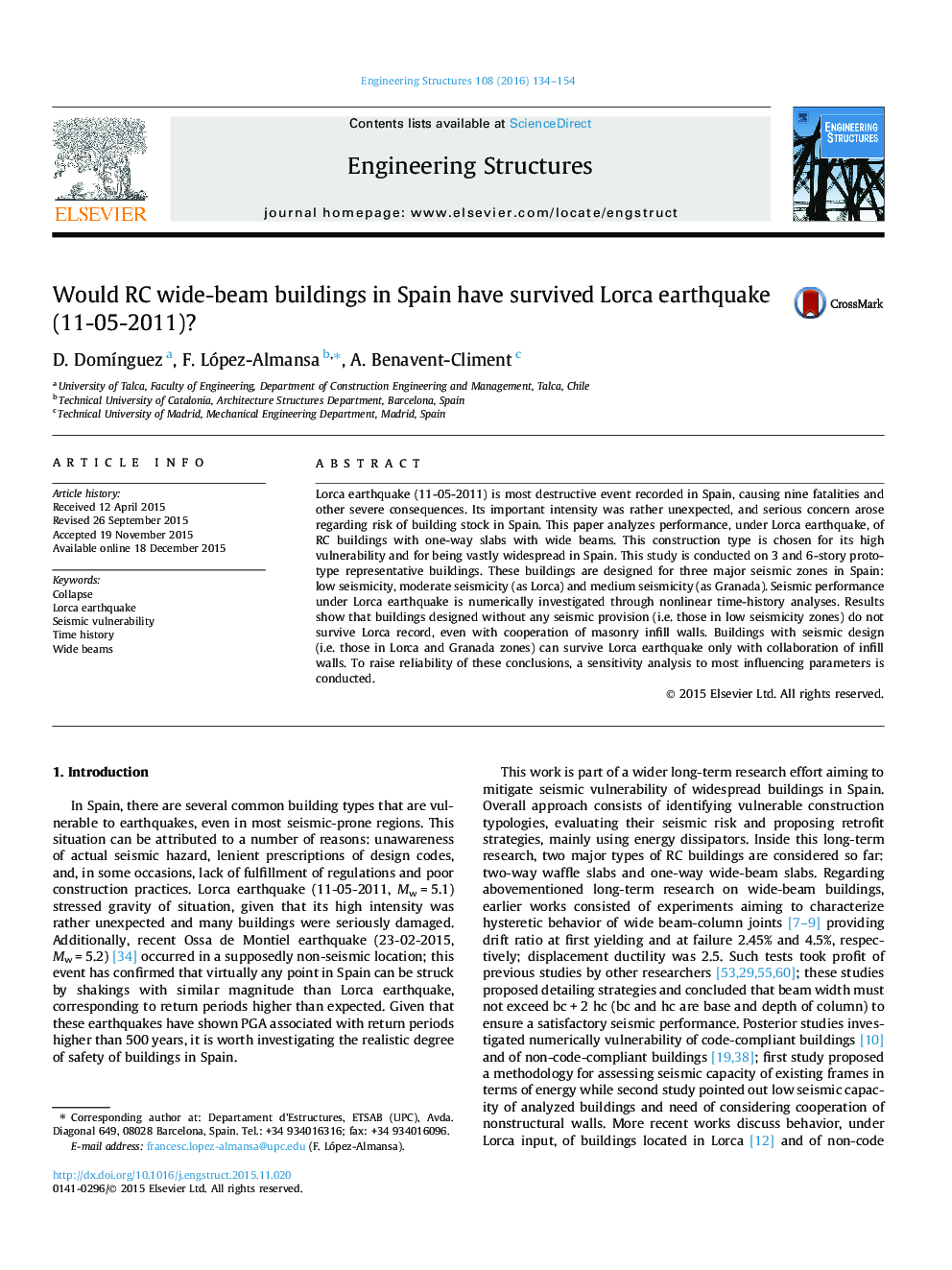| Article ID | Journal | Published Year | Pages | File Type |
|---|---|---|---|---|
| 266020 | Engineering Structures | 2016 | 21 Pages |
•Wide-beam buildings are vulnerable but have been extensively used in of Spain.•Lorca earthquake (11-05-2011) is the most destructive event ever recorded in Spain.•The objective of this study is to investigate numerically the survival of these buildings under Lorca earthquake.•These results will be used to propose tailored retrofit strategies.
Lorca earthquake (11-05-2011) is most destructive event recorded in Spain, causing nine fatalities and other severe consequences. Its important intensity was rather unexpected, and serious concern arose regarding risk of building stock in Spain. This paper analyzes performance, under Lorca earthquake, of RC buildings with one-way slabs with wide beams. This construction type is chosen for its high vulnerability and for being vastly widespread in Spain. This study is conducted on 3 and 6-story prototype representative buildings. These buildings are designed for three major seismic zones in Spain: low seismicity, moderate seismicity (as Lorca) and medium seismicity (as Granada). Seismic performance under Lorca earthquake is numerically investigated through nonlinear time-history analyses. Results show that buildings designed without any seismic provision (i.e. those in low seismicity zones) do not survive Lorca record, even with cooperation of masonry infill walls. Buildings with seismic design (i.e. those in Lorca and Granada zones) can survive Lorca earthquake only with collaboration of infill walls. To raise reliability of these conclusions, a sensitivity analysis to most influencing parameters is conducted.
